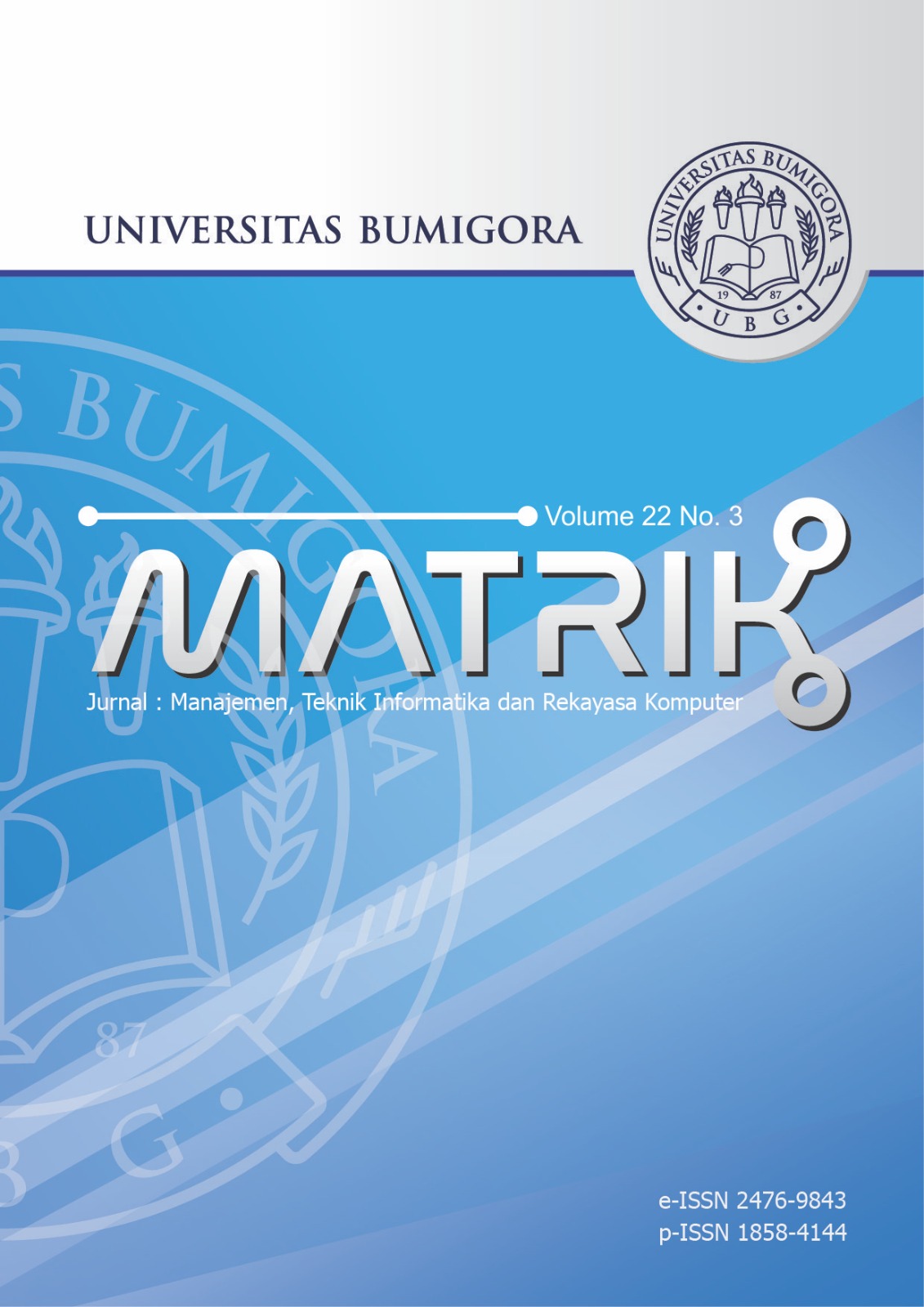Social Media Engagement and Student’s Intention in Indonesian Higher Education Using Unified Theory of Acceptance and Use of Technology
Abstract
Understanding the motivations behind the use of social media in higher education is crucial for assessing its potential benefits and challenges. However, examining the contribution of social media on collaborative learning within the context of Indonesian universities holds significance due to the country’s growing digital landscape and increasing adoption of social media platforms. This research aimed to analyze proposed collaborative learning models involving social media use among Indonesian University students. The proposed models are constructed based on the Technology Acceptance Model (TAM) and the Unified Theory of Acceptance and Use of Technology (UTAUT). The quantitative method used was analyzing primary data from 143 private university students in Indonesia. Data were collected using a 5-point Likert scale self-reported questionnaire of Internet Anxiety, Habit, and Performance Expectancy and Behavior Intention as well as Social Media Engagement to mediate collaborative learning. The result of this study was that Social Media Engagement and Behavior Intention significantly influence Performance Expectancy and Habit. There was also a significant influence of Internet Anxiety on behavioral intention. Thus, Collaborative Learning is significantly influenced by Social Media Engagement. These results provided insight into developing effective strategies for integrating social media into higher education.
Downloads
References
Role of Institutional Support on Relationship between Technology Acceptance Model (TAM) and Student Satisfaction
to Use E- Learning during Covid-19 Pandemic: The Study of Private University in Malaysia,” International Journal of Special
Education, vol. 37, no. 3, p. 2022, mar 2022.
[2] I. Alvi, “College students’ reception of social networking tools for learning in India: an extended UTAUT model,” Smart
Learning Environments, vol. 8, no. 1, pp. 1–18, sep 2021.
[3] M. T. Martinez Garcia and V. Garc´ıa, “Do You Use Instagram?: The Presence of Social Networks in the Foreign Language
Classroom.” in Intercultural Communication and Ubiquitous Learning in Multimodal English Language Education. IGI
Global, jul 2022, pp. 226–243.
[4] J. Bharucha, “Exploring education-related use of social media: business students perspectives in a changing India,” Education
+ Training, vol. 60, no. 2, pp. 198–212, jan 2018.
[5] A. A. M. Hassan Al-Ahdal and B. S. Aljafen, “Social Media Platforms: Perceptions and Concerns of Saudi EFL Learners,”
World Journal of English Language, vol. 13, no. 3, pp. 1–9, feb 2023.
[6] F. Fairuza, F. Aziz, N. Aziz, S. Roslan, and Z. Zaremohzzabieh, “Exploring the Factors of Social Media in Facilitating
Knowledge-sharing among University Academics: A Case Study Approach,” International Journal of Management in Education,
vol. 17, no. 4, pp. 396–414, jan 2023.
[7] T. Khan, M. Kend, and L. A. Nguyen, “Social media academic networking insights from first-year accounting university
students’ experiences,” Higher Education Research & Development, vol. 42, no. 2, pp. 306–321, feb 2023.
[8] A. T. Anastasio, T. Q. Tabarestani, K. Bagheri, M. A. Bethell, I. Prado, J. R. Taylor, and S. B. Adams, “A New Trend in Social
Media and Medicine: The Poor Quality of Videos Related to Ankle Sprain Exercises on TikTok,” Foot & Ankle Orthopaedics,
vol. 8, no. 2, pp. 1–8, apr 2023.
[9] S. Reyad, A. Hussain, V. Gupta, S. Badawi, and A. Abbas, “Knowledge Management in Higher Educational Institutions of
Oman: Determinants of Performance,” in 17th International Conference on Intellectual Capital, Knowledge Management &
Organisational Learning, Toronto, oct 2020, pp. 324–331.
[10] N. Thompson, X. Wang, and P. Daya, “Determinants of News Sharing Behavior on Social Media,” Journal of Computer Information
Systems, vol. 60, no. 6, pp. 593–601, nov 2020.
[11] T. C. Sandanayake, “Enhancing students’ performances by integrating social media in undergraduate learning,” International
Journal of Learning, Teaching and Educational Research, vol. 20, no. 4, pp. 43–60, 2021.
[12] T. Tirasawasdichai, B. Obrenovic, and H. Z. H. Alsharif, “The impact of TV series consumption on cultural knowledge: An
empirical study based on gratificationcultivation theory,” Frontiers in Psychology, vol. 13, no. December, pp. 1–16, dec 2022.
[13] P. Bich Diep, V. Minh Phuong, N. Van Chinh, N. Thi Hong Diem, and K. Bao Giang, “Health Science Students’ Use of Social
Media for Educational Purposes: A Sample from a Medical University in Hanoi, Vietnam,” Health Services Insights, vol. 14,
no. April, pp. 1–9, jan 2021.
[14] A. Namoun, A. Alrehaili, A. Tufail, A. Natour, Y. Husari, M. A. Al-Sharafi, A. M. Alsaadi, and H. Almoamari, “Factors Influencing
the Acceptance of Online Mobile Auctions using User-Centered Agile Software Development: An Early Technology
Acceptance Model,” International Journal of Advanced Computer Science and Applications, vol. 13, no. 11, pp. 908–922, dec
2022.
[15] F. D. Davis, “Perceived Usefulness, Perceived Ease of Use, and User Acceptance of Information Technology,” MIS Quarterly,
vol. 13, no. 3, pp. 319–340, sep 1989.
[16] V. Patel, P. Kautish, and N. Patel, “AR apps’ quality dimensions, customer brand engagement, WoM and purchase intention:
Moderating role of perceived brand value,” International Journal of Electronic Marketing and Retailing, vol. 14, jul 2023.
[17] A. Kamble, D. Golhar, and P. Kalkar, “Technology acceptance for online teaching-learning: perspectives of teachers from higher
education in India,” Educational Media International, vol. 59, no. 4, pp. 324–340, oct 2022.
[18] H. Fakhreldin and R. Miniesy, “Social Media Use and its impact on Egyptian MSMEs ’ Growth,” in 10th European Conference
on Social Media, vol. 2022, 2023, pp. 68–77.
[19] M. A. Kwarteng, A. Ntsiful, L. F. P. Diego, and P. Nov´ak, “Extending UTAUT with competitive pressure for SMEs digitalization
adoption in two European nations: a multi-group analysis,” Aslib Journal of Information Management, pp. 1–27, jun 2023.
[20] D. Yuan, M. K. Rahman, M. A. Issa Gazi, M. A. Rahaman, M. M. Hossain, and S. Akter, “Analyzing of User Attitudes Toward
Intention to Use Social Media for Learning,” SAGE Open, vol. 11, no. 4, pp. 1–13, oct 2021.
[21] M. Mensah and O. B. Onyancha, “Demographic factors influencing the adoption and use of social media in university libraries
in Ghana: A unified theory of acceptance and use of technology (UTAUT) approach,” Journal of Electronic Resources Librarianship,
vol. 33, pp. 170–194, 2021.
[22] S. K. Abbas, H. A. Hassan, S. Iftikhar, and A. Waris, “Assimilation of TTF and UTAUT for Mobile Banking Usage,” International
Journal of Advanced Engineering, Management and Science, vol. 4, no. 4, pp. 305–308, apr 2018.
[23] M. G. Confetto, C. Covucci, F. Addeo, and M. Normando, “Sustainability advocacy antecedents: how social media content
influences sustainable behaviours among Generation Z,” Journal of Consumer Marketing, no. May, pp. 1–17, may 2023.
[24] T. Vuckovic, D. Stefanovic, D. Ciric Lalic, R. Dionisio, Aˆ . Oliveira, and D. Przulj, “The Extended Information Systems Success
Measurement Model: e-Learning Perspective,” Applied Sciences, vol. 13, no. 5, pp. 1–22, mar 2023.
[25] W.Wei, X. Gong, J. Li, K. Tian, and K. Xing, “A study on community older people’s willingness to use smart homean extended
technology acceptance model with intergenerational relationships,” Frontiers in Public Health, vol. 11, no. June, pp. 1–12, jun
2023.
[26] J. Nasongkhla and C.-J. Shieh, “Using technology acceptance model to discuss factors in university employees’ behavior intention
to apply social media,” Online Journal of Communication and Media Technologies, vol. 13, no. 2, pp. 1–14, apr 2023.
[27] N. Yoo and S. H. Jang, “Digital technology use, technological self-efficacy, and subjective well-being among North Korean
migrants during the COVID-19 pandemic: Moderated moderation,” DIGITAL HEALTH, vol. 9, no. May, p. 205520762311715,
jan 2023.
[28] M. A. Okaily, M. S. A. Rahman, A. Ali, E. A. Shanab, N. Ra’, E. Masa’, and N. Deh, “An empirical investigation on acceptance
of mobile payment system services in Jordan: extending UTAUT2 model with security and privacy,” International Journal of
Business Information Systems, vol. 42, no. 1, pp. 123–152, jan 2023.
[29] K. A. A. Sleiman, X. Cai, J. Lan, H. Lei, and R. Liu, “Relationship Marketing and Information Technology’s Impact on
Customer Satisfaction and Commitment,” Open Journal of Business and Management, vol. 09, no. 03, pp. 1030–1049, jan
2021.
[30] B. M. Nilasari, “The Impact of Social Media on Employee Work Performance with Trust as a Mediation Variable,” Jurnal
Manajemen, vol. 24, no. 2, pp. 298–312, jun 2020.
[31] R. Ghosh, A. Khatun, and Z. Khanam, “The relationship between social media based teaching and academic performance during
COVID-19,” Quality Assurance in Education, vol. 31, no. 1, pp. 181–196, sep 2022.

This work is licensed under a Creative Commons Attribution-ShareAlike 4.0 International License.


.png)













